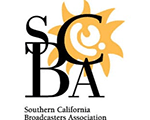U.S. Hispanics: the future is here and it’s not acculturated [REPORT]
 U.S. Hispanics offer a vast and rich opportunity for brands and marketers – but you need to root engagement in the reality of today’s hypercultural Latino.
U.S. Hispanics offer a vast and rich opportunity for brands and marketers – but you need to root engagement in the reality of today’s hypercultural Latino.
 U.S. Hispanics offer a vast and rich opportunity for brands and marketers – but you need to root engagement in the reality of today’s hypercultural Latino.
U.S. Hispanics offer a vast and rich opportunity for brands and marketers – but you need to root engagement in the reality of today’s hypercultural Latino.
 New analysis shows that some media perform consistently around the world, but local insight is needed to maximise media effectiveness.
New analysis shows that some media perform consistently around the world, but local insight is needed to maximise media effectiveness.
 Media inflation in 2021 has reflected that increase in confidence. Overall media inflation is at 4.0% globally, with offline media reaching 3.5% and online 4.4%.
Media inflation in 2021 has reflected that increase in confidence. Overall media inflation is at 4.0% globally, with offline media reaching 3.5% and online 4.4%.
 In the 25-minute conversation, Gonzalo and Claritas Director of Marketing, Monique Ruiz, discuss ways brands can increase their diversity and inclusion efforts in a way that is relevant and matters to consumers. They also provide the non-negotiables for having access to accurate data on multicultural consumers
In the 25-minute conversation, Gonzalo and Claritas Director of Marketing, Monique Ruiz, discuss ways brands can increase their diversity and inclusion efforts in a way that is relevant and matters to consumers. They also provide the non-negotiables for having access to accurate data on multicultural consumers
 There are endless resources available to sports fans when it comes to staying up-to-date on their favorite athletes, teams and sporting events. With that in mind, finding the most up-to-date information that piques their interest—without having to leverage multiple devices or visit multiple platforms—can be cumbersome.
There are endless resources available to sports fans when it comes to staying up-to-date on their favorite athletes, teams and sporting events. With that in mind, finding the most up-to-date information that piques their interest—without having to leverage multiple devices or visit multiple platforms—can be cumbersome.
 An overwhelming majority of American consumers are experimenting with new brands, and embracing new omnichannel shopping behaviors, which is setting the stage for permanently-heightened competition, according to a new study by IAB.
An overwhelming majority of American consumers are experimenting with new brands, and embracing new omnichannel shopping behaviors, which is setting the stage for permanently-heightened competition, according to a new study by IAB.
 One of the questions I often get about my experience as a multicultural marketing expert is what the most effective companies in this field have in common. When I answer that consistency is probably the main characteristic, some seem surprised because they think that the amount of investment is perhaps the defining factor for multicultural programs. By Isaac Mizrahi – Co-President of ALMA
One of the questions I often get about my experience as a multicultural marketing expert is what the most effective companies in this field have in common. When I answer that consistency is probably the main characteristic, some seem surprised because they think that the amount of investment is perhaps the defining factor for multicultural programs. By Isaac Mizrahi – Co-President of ALMA
 In the next normal, consumer-goods companies can achieve profitable growth and outsize returns by renewing their focus on core execution capabilities.
In the next normal, consumer-goods companies can achieve profitable growth and outsize returns by renewing their focus on core execution capabilities.
![]() To navigate the current and future state of disruption, brands must shift their mindset
To navigate the current and future state of disruption, brands must shift their mindset
 Marissa Solis the veteran marketing expert that helped Pepsico market many of their products as Sr. Vice President – Core Brands, Partnerships, and Media at Frito Lay. Previously Ms. Solis also was the Vice President/General Manager – Hispanic Business Unit, Pepsico North America Beverages.
Marissa Solis the veteran marketing expert that helped Pepsico market many of their products as Sr. Vice President – Core Brands, Partnerships, and Media at Frito Lay. Previously Ms. Solis also was the Vice President/General Manager – Hispanic Business Unit, Pepsico North America Beverages.
 Despite the undeniable impact of COVID, I feel that we have many reasons to toast as we enter the final quarter of this year, both as a country, an industry, and as individuals. By Roberto Orci
Despite the undeniable impact of COVID, I feel that we have many reasons to toast as we enter the final quarter of this year, both as a country, an industry, and as individuals. By Roberto Orci
 Hispanics are the secret to the growth— and the future success of America. But for too long, this group has been viewed as a single segment. Latinos are a community of limitless diversity yet firmly connected by our culture, our language and our shared experiences. By Stacie de Armas is Nielsen’s Senior Vice President of Diverse Insights and Initiatives
Hispanics are the secret to the growth— and the future success of America. But for too long, this group has been viewed as a single segment. Latinos are a community of limitless diversity yet firmly connected by our culture, our language and our shared experiences. By Stacie de Armas is Nielsen’s Senior Vice President of Diverse Insights and Initiatives
 Starting at 7 PM (ET), the audiences will be able to enjoy a new block of programming beginning with: Mirador Mundial, Oppenheimer Presenta, En diálogo con Longobardi, Docufilms con María Celeste Arrarás and Don Francisco: Reflexiones.
Starting at 7 PM (ET), the audiences will be able to enjoy a new block of programming beginning with: Mirador Mundial, Oppenheimer Presenta, En diálogo con Longobardi, Docufilms con María Celeste Arrarás and Don Francisco: Reflexiones.
 Agency leaders’ personalities can influence their agency’s cultures and reputations. Beyond that, agencies have their own “personalities,” so to speak, as represented through their brand, culture and positioning. By Mark Duval – The Duval Partnership
Agency leaders’ personalities can influence their agency’s cultures and reputations. Beyond that, agencies have their own “personalities,” so to speak, as represented through their brand, culture and positioning. By Mark Duval – The Duval Partnership
 Has your firm turned the corner on agency compensation? Many agency executives insist they have, pointing to the fact they have negotiated better hourly rates, better retainers, or better terms on cost-plus remuneration agreements. The problem, of course, is that they are simply getting better and better at doing the wron
Has your firm turned the corner on agency compensation? Many agency executives insist they have, pointing to the fact they have negotiated better hourly rates, better retainers, or better terms on cost-plus remuneration agreements. The problem, of course, is that they are simply getting better and better at doing the wron
![]() US consumer expectations as measured by The Conference Board Consumer Confidence Index ticked up in October, but this followed three months of declines. Did the declines signal recession in 2022 or just a hiccup related to the Delta variant? We propose the latter.
US consumer expectations as measured by The Conference Board Consumer Confidence Index ticked up in October, but this followed three months of declines. Did the declines signal recession in 2022 or just a hiccup related to the Delta variant? We propose the latter.
 Just in time for “Día de los Muertos” when we celebrate the lives of those who have left us and beyond all the terrible deaths caused by Covid19, 2021 has marked the passing of three great advertising leaders for whom I worked for. By Luis Miguel Messianu, Founder-Creative Chairman-CEO Alma
Just in time for “Día de los Muertos” when we celebrate the lives of those who have left us and beyond all the terrible deaths caused by Covid19, 2021 has marked the passing of three great advertising leaders for whom I worked for. By Luis Miguel Messianu, Founder-Creative Chairman-CEO Alma
 Edelman announced the release of a comprehensive global study revealing a dramatic shift in the importance placed on Corporate Communications by CEOs, Boards of Directors and other C-suite executives at the world’s leading companies. The “Future of Corporate Communications” research finds that the role of Corporate Communications has forever changed – shifting away from what has traditionally been viewed as a support function towards one increasingly recognized as an enabler of enterprise value.
Edelman announced the release of a comprehensive global study revealing a dramatic shift in the importance placed on Corporate Communications by CEOs, Boards of Directors and other C-suite executives at the world’s leading companies. The “Future of Corporate Communications” research finds that the role of Corporate Communications has forever changed – shifting away from what has traditionally been viewed as a support function towards one increasingly recognized as an enabler of enterprise value.
 In a comprehensive study, NBCUniversal, MAGNA and the IPG Media Lab find that video ads created for the Total Market fall short among most Hispanics, but ads that leverage a language connection first, drive brand growth.
In a comprehensive study, NBCUniversal, MAGNA and the IPG Media Lab find that video ads created for the Total Market fall short among most Hispanics, but ads that leverage a language connection first, drive brand growth.
 A new Nielsen study commissioned by The Southern California Broadcasters Association demonstrates the power of impressions for the radio industry. These findings show that agencies are increasingly using impressions to evaluate media, and the usefulness of impressions to evaluate radio and digital using a common metric.
A new Nielsen study commissioned by The Southern California Broadcasters Association demonstrates the power of impressions for the radio industry. These findings show that agencies are increasingly using impressions to evaluate media, and the usefulness of impressions to evaluate radio and digital using a common metric.